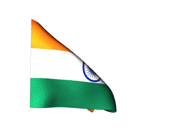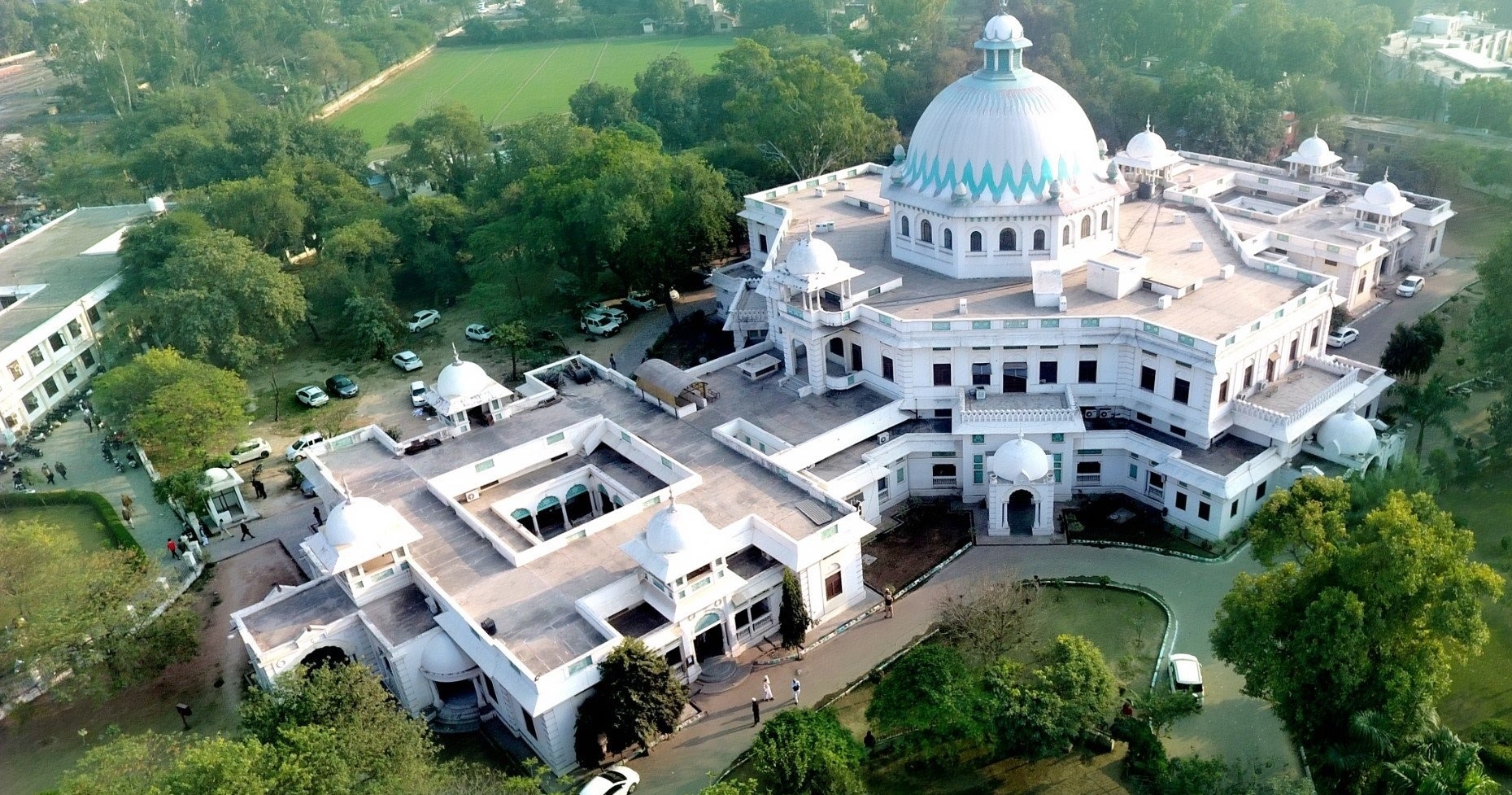History
Faridkot the Royal City
Faridkot town is an important historic town in the state of Punjab in North-West India. According to Punjab’s Geo-Area, Faridkot is a Malwa District. The name ‘Faridkot’ is derived from Baba Farid, the famous religious lover of God whose Bani appears in the Sri Guru Granth Sahib. Faridkot was state from 1763 to 1947. The history of the Faridkot District pertaining to the ancient period has been traced to the Indus Valley Civilization. A few sites explored in the Moga Tehsil (Now a separate District) link it with Indus Valley Civilization sites explored in the Rupnagar District. A vast area, including the present area of Faridkot District was under the influence of Indus Valley Civilization. The ruling dynasty of Faridkot State claimed descent from Rawal Jaisal, who founded Jaisalmer in Rajasthan in 1156. The town was founded in the 16th century by his descendant Bhallan of the Burai Jats.The ancestor of the Faridkot principality, Bhallan was an ardent follower of 6th Sikh Guru Har Gobind. He helped the Guru Har Gobind ji in the battle of Mehraj. He died issueless in 1643. Kapura, who was a nephew of Bhallan, succeeded him. Kapura founded the town of Kotkapura in 1661. Nawab Kapura was the Chaudhry of eighty-four villages. He was a Sikh but did not want to earn the ire of the Mughals and help Guru Gobind Singh Ji and fight with Mughals. The famous last battle of Muktsar (Khidrane Di Dhaab) now a historic town, happened after Nawab Kapura declined Guru Gobind Singh’s request to use his fort to fight Mughal Army. Otherwise the last war between Mughals and Guru Gobind Singh Ji was destined to happen at Kotkapura. Guru ji moved from Kotkapura to Dhilwan Kalan from there to Talwandi sabo via Guru ki Dhab. However, later in the battle of Muktsar in 1705, Nawab Kapuray, helped Guru Gobind Singh Ji in an underhand manner. Kapura was slain by Isa Khan Manj in 1708. He had three sons named Sukhia, Sema and Mukhia. Mukhia killed Isa Khan and took control of the entire area. Sema was also killed in this battle in 1710. Kapura’s elder son Sukhia again came into power in 1720. A dispute between grandsons of Kapura (sons of Sukhia) led to the division of state in 1763. The older brother, Sardar Jodh Singh Brar, retained control of Kotkapura, and his younger brother, Sardar Hamir Singh Brar, was given Faridkot. The state was captured in 1803 by Ranjit Singh, but was one of the Cis-Sutlej states that came under British influence after the 1809 Treaty of Amritsar. During the Sikh wars in 1845, Raja Pahar Singh aided the British, and was rewarded with an increase of territory. The state had an area of and its 642 square miles, and a population of 124,912 in 1901. It was bounded on the west and northeast by the British district of Ferozepore, and on the south by the state of Nabha. The last Ruler of Faridkot was Lt. HH Farzand-i-sadaat Nishan Hazrat-i-kaisar-i-hind Raja Sir Harindar Singh Brar Bans Bahadur. Before partition there was majority Muslim population in Faridkot. Faridkot has played a leading role in the politics of the state of Punjab with a number of chief ministers and even a president hailing from the area. Although the separation of Moga and Muktsar left this district considerably smaller, the area remains an important political arena.
About District & Sessions Court
Faridkot was created Sessions Division on 01-04-1973 by Honble High Court, which includes Sri Muktsar Sahib, Malout, Gidderbaha and Moga its subdivisions.The Faridkot district contains 2 Cities Faridkot, Kotkapura. More than 7 towns/villages are quite notable in the Faridkot area such as Jaitu, Bajakhana, Panjgarain Kalan, Deep Singh Wala, Golewala, Jhok Sarkari, Doad, Ghugiana, Sadiq, Chand Bhan, etc. Faridkot is a hub for premier educational institutions. North India’s only Medical University, also named after Baba Farid is in Faridkot besides Medical In year 1997, Addition District & Sessions Courts start functioning in Sri Muktsar Sahib and in year 1998, Addition District & Sessions Courts start functioning in Moga. On 15-01-2010, Sri Muktsar Sahib has been start functioning as a separate Sessions Division. Now, Gidderbaha and Malout are sub-divisions of Sri. Muktsar Sahib. Hon’ble Punjab & Haryana High Court established Moga as separate Sessions Division on 28-04-2012.
Monuments, Buildings and Places of Tourist Attraction
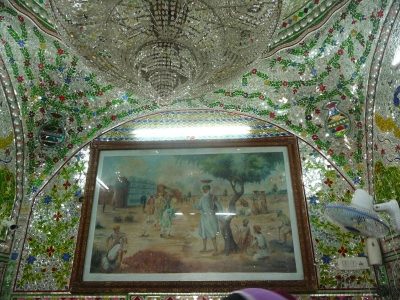
Gurdwara Tilla Baba Farid Ji
This Gurdwara Sahib is as old as the town-self. This place is situated near the Qilla Mubarak. Baba Farid remained at this place in meditation for 40 days before proceeding to Pakpattan. Besides place of Tilla Baba Farid,a sacred piece of wood with which Baba ji wiped his hands littered with mud has been preserved to – date. Shabad-Kirtan is recited get daily and Langer is also served every day to the people visiting this place. Larger number of people visit this holy place on every Thursday to pay their obeisance to the great Sufi Saint.

Gurudwara Godri sahib (Faridkot)
Godri sahib is situated on the out skirts about 4 K.M. on Faridkot-Kotkapura road.It is believed that Baba Sheikh Farid left his godari (Jacket) there before entering Faridkot town. A beautiful gurdwara was constructed in 1982 and a Sant Sarover was later constructed at this place.Large numbers of people visit this place every Thursday and also take bath in this Sarover.
<
Gurudwara Gangsar sahib (Jaitu)
Shri Guru Gobind visited here on his way to Sri Muktsar Sahib.The Guru met a Hindu pilgrim who was on his way to the sacred Ganges river for a dip. Guru Gobind Singh convinced the pilgrim that a dip in the pool at Jaito was just as equivalent as bathing in the Ganges as all places are sacred and blessed by God.
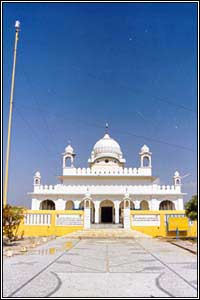
Gurudwara Jand Sahib (Sadiq)
Gurdwara Jand Sahib Ji is located in the Virevala Kalari village of Faridkot, Punjab, dedicated to Shri Guru Gobind Singh Ji. It is 25 km west of Faridkot (30°40’N, 74°45’E) in the Punjab. This is believed to be the place where, according to Malwa Desh Ratan Di Saakhi Pothi,Shri Guru Gobind Singh ji, during his travels through the Malwa country, rested for awhile in the forest under a ber tree. The present building was constructed during the 1970’s through karseva (voluntary service) by followers of Sant Gurmukh Singh.
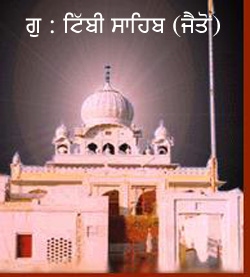
Gurudwara Tibbi sahib(Jaitu)
Shri Guru Gobind Singh Ji have visited Jaitu on 15th April, 1706. Here Guru Ji stayed at a Sand Dune (Tibba) near village Jaitu and practiced arrows shooting with other sikhs. People congregate here on 10th Phagun every year in memory of the sikhs who scarified their lives during Jaitu Morcha and this is known as Shaheedi Jor Mela.

Gurudwara Guru ki Dhab (Jaitu)
Gurudwara Guru Ki Dhab is one of the enchanting monument in Faridkot. This amazing Gurudwara is situated in a small village, Guru ki Dhab which is 12 km away from Kotkapura on the Kotkpura –Jaitu road. Gurudwara Guru Ki Dhab is also known as the Doda Taal and Gurudwara Patshahi Dasvin. It is believed by the people that Guru Gobind Singh visited this place while passing through the village.
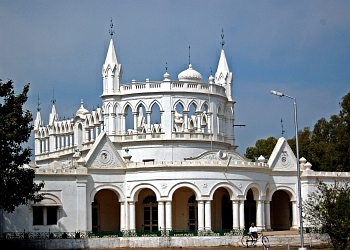
Rest House
Now locally called Darbarganj Rest House, this Gothic Revival structure is situated in a large garden to the northwest of the clock tower. Makhan Singh records that the rest house was nominated for the residence of the rulers of neighbouring states and the British Agent of the Governor General of India.
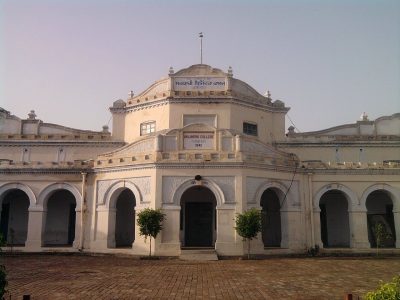
Govt.Baljindra College,Faridkot
Govt. Brijindra college is a premier educational institution of the malwa region in Punjab. In pursuance of the wisdom that excellence is a journey not a destination, Govt Brijindra College embarks upon the endeavor of seeking NAAC accreditation. Founded in the memory of His Highness maharaja Brij Inder singh of Faridkot, the college started its voyage in 1942.Affilation was extended to college by Panjab University in 1948, and subsequently by Punjabi University , Patiala in 1966.
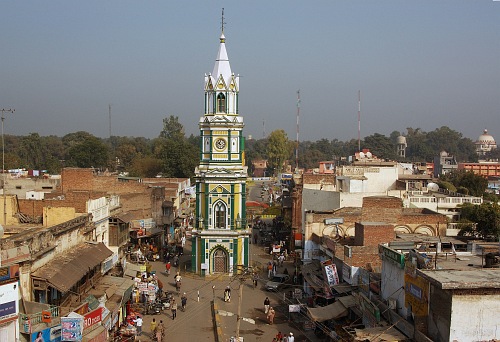
Victoria Clock Tower
Situated to the north of Raj Mahal, the clock tower is still the tallest structure in Faridkot town and thus forms a major landmark. Thanks to the authorities responsible for its regular maintenance, even after more than a century it survives in good condition, and still serves its purpose. It is not known what the original colour of the monument was. Now it is painted in garish green and yellow ochre enamels Structurally, the clock tower is a free-standing tower built in the true Gothic style, with four easily seen clock-faces on the cardinal sides. Originally, the tower stood on a platform which has vanished due to the raising of the surrounding road level. The tower proper, measuring 6.6 m square outside, rises in four storeys, each marked by a cornice, the whole capped with a conical spire further surmounted by a high metallic finial. The first and second storeys form chamfered squares whereas the upper two storeys are octagonal in shape.Each side of the first two storeys and the cardinal sides of the fourth storey are pierced by a narrow Gothic pointed arch. The arches of the uppermost storey are further subdivided into smaller arches. On the parapets of the first and second storeys are placed decorative towers and pinnacles.



